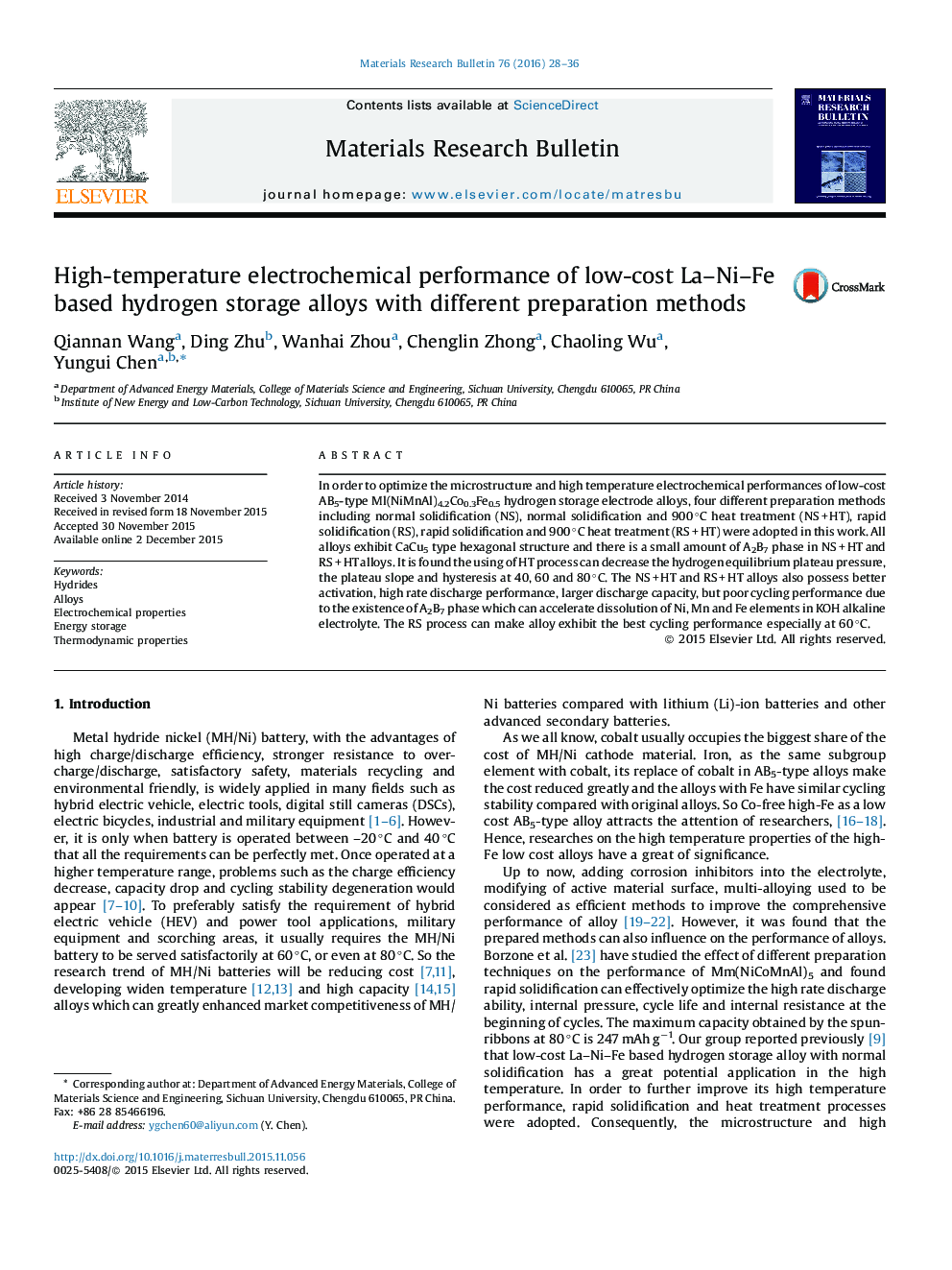| Article ID | Journal | Published Year | Pages | File Type |
|---|---|---|---|---|
| 1487358 | Materials Research Bulletin | 2016 | 9 Pages |
•Effects of four different preparation processes were studied at 20/60 °C.•All NS + HT, RS and RS + HT processes can optimize the thermodynamic performance.•The HT process can provoke the precipitation of A2B7 and leads to a poor cycling life.•Al exhibits the most remarkable dissolution for all the alloys, especially at 60 °C.
In order to optimize the microstructure and high temperature electrochemical performances of low-cost AB5-type Ml(NiMnAl)4.2Co0.3Fe0.5 hydrogen storage electrode alloys, four different preparation methods including normal solidification (NS), normal solidification and 900 °C heat treatment (NS + HT), rapid solidification (RS), rapid solidification and 900 °C heat treatment (RS + HT) were adopted in this work. All alloys exhibit CaCu5 type hexagonal structure and there is a small amount of A2B7 phase in NS + HT and RS + HT alloys. It is found the using of HT process can decrease the hydrogen equilibrium plateau pressure, the plateau slope and hysteresis at 40, 60 and 80 °C. The NS + HT and RS + HT alloys also possess better activation, high rate discharge performance, larger discharge capacity, but poor cycling performance due to the existence of A2B7 phase which can accelerate dissolution of Ni, Mn and Fe elements in KOH alkaline electrolyte. The RS process can make alloy exhibit the best cycling performance especially at 60 °C.
Graphical abstractFigure optionsDownload full-size imageDownload as PowerPoint slide
